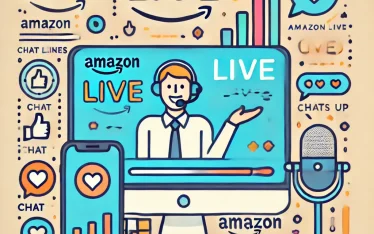Following the bustling holiday shopping season from Christmas to New Year, a prevailing storyline emerges throughout Amazon: a noticeable dip in sales. This downturn is particularly evident for sellers on platforms like Amazon, where the shift from the holiday shopping fervour to a quieter period is stark. Instead of viewing this phase of reduced business activity as a downturn, it should be regarded as a chance for deliberate strategic adjustments.
What is a post-holiday sales slump?
The “post-holiday sales slump” refers to a period of reduced consumer spending and diminished sales that typically occurs after the festive holiday season. Following the intense shopping activity associated with holidays like Christmas, there is often a noticeable decline in consumer demand as people have fulfilled their gift-giving obligations. No, it’s not a myth. It’s as real as it gets.
This slump is commonly experienced by retailers, both in brick-and-mortar stores and online platforms, including e-commerce giants like Amazon. Sellers may observe a decrease in sales and customer engagement during this time, leading to a temporary slowdown in business activity. Many businesses use this period to assess performance, strategize for the upcoming year, and implement adjustments to capitalise on future opportunities.
Taking a proactive stance is crucial for your upcoming months’ strategy. Despite significant investments in holiday season marketing, there’s an opportunity to boost profits with an additional push to capitalise on post-holiday sales.
Consumer behaviour indicates that the prime time for purchases is either just before or after Christmas. For a company like Amazon aiming for a lucrative January, this presents an exciting proposition.
With a 50% increase in return rates for purchases and a surge in traffic immediately following Christmas, the opportunity is prime to secure high-quality conversions in the initial weeks of January. You can always turn for help from our Amazon consultant.
Tips to Overcome Post-Holiday Slump
While there’s no magical solution to entirely eradicate the post-holiday sales slump, Amazon must strategize clever methods to overcome the seasonal slowdown. Here are some latest strategies for post-holiday sales success:
#1: Accept the reality
Many Amazon sellers experience a surge in sales after Thanksgiving, followed by a noticeable decline post-Christmas, and that’s perfectly normal. It’s crucial not to directly compare Q4 2023 sales data with Q1 2024 sales data. Between the period from Thanksgiving to New Year, buyers are immersed in a shopping frenzy, purchasing gifts and fulfilling their wish lists.
It’s natural for them to take a break from online shopping in the immediate days following the holidays. If you find your products aren’t gaining as much traction during this post-holiday period, know that you’re not alone in this experience.
#2: Bring your customers back with another sale
This one might not seem like an obvious tip, but we promise it works. Sellers encounter a sales slowdown not due to a lack of customer interest but because buyers often shift into a “full-price” mindset. Shoppers, having received gift cards and cash during the holidays, still have the means to make purchases.
It’s advisable to instruct your Amazon marketing consultants to initiate promotions and provide discounts, particularly on items with extended inventory tenure or self-care products that align with shoppers’ New Year’s resolutions.
While achieving the same sales levels as the holiday season may not be imperative, there’s ample room for inventive strategies, such as:
- Launch a Winter Season Clearance Sale: Initiate a clearance sale tailored to the winter season, providing an opportunity to clear inventory while offering enticing deals to customers.
- Engage Your Audience with Valentine’s Promotions and Events: Capitalise on Valentine’s Day by engaging your audience with special promotions and events, creating a new sales avenue.
- Introduce ‘Buy 1 Get 1 Free’ Offers: Capture customer interest with attractive offers like ‘Buy 1 Get 1 Free,’ providing added value and enticing them to make purchases.
- Incorporate Freebies in the Sale: Enhance the appeal of your sale by offering complimentary items, adding an extra layer of value for customers.
- Provide Bulk Buy Discounts: Encourage bulk purchases by offering discounts, giving customers an incentive to buy more and save.
#3: Unlock the potential of automated marketing
Monitor the continuous progression of customer experiences using marketing automation to sustain your post-holiday sales momentum. Establishing action-triggered and personalised customer journeys allows you to maintain ongoing communication. In an automated system, after a customer receives a personalised email, a subsequent follow-up email can be triggered, potentially containing product recommendations tailored to their previous spending patterns.
#4: Employ tactics to encourage impulse purchases
Deploying effective tactics to spur impulse purchases is crucial in navigating through a sales slump, especially considering the prevalence of unplanned buying behaviours. Crafting a robust strategy to capitalise on these tendencies can be a game-changer during slower sales periods. Here are some innovative ideas:
- Leverage Mobile Technology: Optimise your store for mobile devices to enhance the likelihood of impulse purchases. Ensure a seamless and user-friendly experience for customers browsing through their smartphones.
- Harness the Power of Social Media: Utilise social media tools to connect with your audience, targeting specific demographics with enticing product news and promotional offers. With millions actively using social channels on their mobile devices, tailor campaigns to increase conversion opportunities.
- Offer Conditional Free Shipping: Introduce conditional free shipping by calculating the customer’s average order value and setting the free shipping threshold slightly above this average, typically ranging from $5 to $20.
- Time-Limited Promotions: Combine incentives with a sense of urgency through time-limited promotions. This approach creates a compelling environment for impulse buying, prompting customers to make swift purchase decisions.
By incorporating these tactics into your marketing strategy, you can leverage the inherent inclination for impulse purchases and boost sales during periods of slower market activity.
#5: Consider significant discounts for perishable items
If your holiday season sales fell below expectations, you may find yourself with substantial remaining stock. While non-perishable items like clothes and electronics may not pose a significant issue, the urgency is higher for perishable goods with a limited shelf life. Applying substantial discounts becomes crucial in expediting sales, ensuring that you recoup some value rather than facing the unfortunate alternative of disposing of these items.
#6: Conduct a comprehensive inventory assessment
Recognizing overstocked items empowers sellers to devise promotional strategies or implement discounts to swiftly clear surplus inventory. This not only liberates valuable storage space but also injects an instant boost to cash flow. Additionally, anticipating a surge in post-holiday returns is prudent. Having a well-defined plan and a prepared team in place ensures the efficient handling of the additional workload associated with returns.
#7: Reflect on the achievements and shortcomings of the past year
The Q4 stands as the most hectic period for Amazon sellers, with a constant influx of orders and sales. Amidst the bustling activity, it can be challenging to focus on refining your business strategy. This moment calls for a thorough examination of your sales reports, product performance, PPC campaigns, and account health spanning the recent months. Take a step back, assess what worked effectively, pinpoint areas that fell short, and contemplate potential improvements. By identifying pain points and addressing any operational challenges, you’ll position yourself to excel and achieve remarkable success in the upcoming year!
#8: Launch a new product
Avoid the common error of going into hibernation immediately after the peak sales period ends, a mistake many marketers make. The New Year presents a golden opportunity for astute online sellers to captivate new customers by meeting their fresh product demands. While competitors are occupied with restocking inventory, distinguish yourself by introducing product launch on Amazon to the market. Seize attention by spotlighting these additions in your inventory, as customers are often eager to convert for novel items. Prepare your go-to-market strategy and execute a compelling launch. Provide early bird discounts on upcoming products to give your store a competitive edge.
#9: Tap into shoppers’ New Year’s Commitments
It’s 2024! And with that comes new resolutions. Align with the aspirations of shoppers as they embark on their New Year’s resolutions. With the arrival of January 1st, a collective shift occurs in people’s attitudes, marked by a sudden determination to elevate themselves. The “New Year, New Me” mantra takes hold, presenting a prime opportunity for sellers with products geared towards fulfilling these resolutions.
While items like luxury shoes or alcoholic beverages may experience a sales decline during this period, those promoting products aligned with self-improvement are poised for success. Think workout equipment, daily planners, habit trackers, juice cleanses, and organisers – all tailored to cater to individuals seeking positive transformations. This initial quarter provides a fertile ground for Amazon to tap into the wave of self-betterment aspirations.
#10: Plan for 2024!
The New Year signifies a time for setting resolutions that guide us throughout the year — commitments to consume more greens, exercise regularly, spend judiciously, and more. For Amazon sellers, January offers a prime opportunity to establish resolutions specifically tailored to enhance their Amazon business. Develop a comprehensive FBA holiday calendar pinpointing crucial shopping days, strategically plan marketing activities around these dates, and scrutinize your listing details. Consider optimising your listings with the expertise of Amazon product listing optimization services to ensure maximum effectiveness.
In conclusion, navigating the post-holiday period as an Amazon seller requires strategic foresight and proactive measures. Whether it’s capitalising on post-holiday sales, implementing innovative marketing tactics, or optimising inventory management, these efforts can shape a successful start to the new year. Embracing the opportunities presented, such as catering to evolving customer demands, and fine-tuning your Amazon business resolutions, positions you for growth and resilience. Remember, the post-holiday phase is not a downturn but a chance for recalibration and strategic adjustments. By staying agile, engaging customers, and leveraging expert insights, you can set the stage for a prosperous and fulfilling year ahead in the dynamic landscape of Amazon selling. You can also hire Amazon consulting experts who can stay focused on maintaining your sales number every month.
















About The Author
Jimi Patel
Jimi Patel, is a Co-founder and CEO at eStore Factory, an Amazon SPN certified agency that serves as a one-stop solution for all your Amazon business needs. Having helped countless brands increase sales and grow their footprint on Amazon, Jimi provides the most practical and effective solutions for your business. He is highly skilled in developing and executing plans that align with your specific business goals and objectives. When not working, Jimi enjoys practicing yoga and traveling to new places. He is an avid reader and enjoys staying up-to-date on the latest trends and developments in the e-commerce industry.